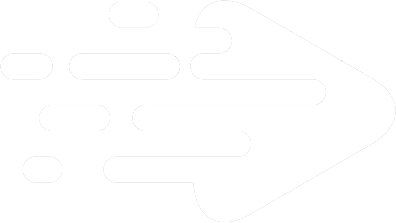Behind the Scenes: How Companies Really Hire
This will change the way you job hunt.
Finding a job in 2025 feels like searching for a hidden door in a room full of mirrors. You apply. You wait. You get ghosted. Rinse and repeat.
It’s not just you—hiring has fundamentally changed. And if you’re still relying on job boards and one-click applications, you’re playing the game backwards.
Here’s how employers actually fill roles—and what you need to do instead.
Stage 1: “We have an announcement to make…” (You’ll never hear it.)
Before a job ever hits LinkedIn, companies promote from within. Or they shift responsibilities around. The job you could have had? It just got absorbed into someone else’s workload.
That’s why you never saw the posting—because there wasn’t one.
Stage 2: “Hey, do you know anyone?” (And it’s never you.)
If no one’s getting promoted, hiring managers turn to their network. They ask colleagues, friends, even former employees. Sometimes there’s a referral bonus attached.
The catch? You can’t network when you need a job. You have to do it before you need one.
✅ Action step: Build relationships in your industry now, before you’re job hunting. Connect with hiring managers, not just recruiters.
Stage 3: “Let’s check the professional groups.”
Some hiring managers turn to industry associations before going public. They assume that people in these groups are more serious about their field.
✅ Action step: Join niche communities, Slack groups, LinkedIn groups, or trade organizations. These are where jobs surface before they’re posted.
Stage 4: “Fine, let’s call a recruiter.”
When personal networks and associations don’t work, companies turn to recruiters. But not all recruiters are created equal.
🔹 Some are great and will coach you through the process.
🔹 Some are middlemen who scrape 10-30% off your salary.
🔹 Some will blast your resume without your knowledge.
✅ Action step: Instead of waiting for recruiters to contact you, find the job yourself. Then you choose the recruiter, not the other way around.
Stage 5: “Let’s throw it on a job board.” (And get 1,000+ applications.)
This is the last resort. When all else fails, companies finally post the job publicly—and that’s where most job seekers enter the process.
By the time you apply, 100+ people have already been interviewed.
✅ Action step: Don’t rely on job boards. Use them for research, then bypass the line by reaching out to decision-makers directly.
Job boards are a trap — you’re stuck in a losing game.
Job boards are where job seekers start—but they’re where employers go last.
By the time a job posting hits LinkedIn or Indeed, it’s already been passed around internally, through personal networks, and by recruiters. That means you’re showing up at the end of the line.
But job boards feel productive, right? Jobs land in your inbox, you click “Apply,” and you tell yourself you’re making progress. The problem? That same job listing hit thousands of inboxes. You’re now one of hundreds (if not thousands) of applicants fighting for attention.
Yeah, sure, someone will comment, “I got a job from a job board!” And they probably did. But the odds are brutal, and in today’s market, they’re worse than ever.
The Real Danger? You Start to Settle.
At first, you look for the right job. But as the weeks go by and the rejections pile up, you shift.
You start asking:
❌ How can I make myself the perfect fit for this random job I don’t even want?
❌ What skills do I need to add just to get noticed?
❌ Should I lower my expectations?
Your confidence drops. Your urgency rises. And suddenly, you’re applying for anything just to get a response.
That’s how people get stuck. They compromise. They shrink their ambitions. And they take jobs they don’t want—just to escape the cycle.
Here’s What to Do Instead:
✅ Stop relying on job boards. Use them for research, not for hope.
✅ Go where the jobs are filled first: networks, direct outreach, and industry groups.
✅ Take control of the process. Find the hidden roles and skip the line.
The best jobs never even make it to job boards. If you want to get hired faster, you have to move before they’re posted.
That’s what we teach at FasterGig. If you’re ready to stop waiting and start winning, let’s get to work.
Job hunting isn’t about being the best candidate.
It’s about being the first candidate.
Are you tired of the endless and frustrating job search process? Look no further than FasterGig – the smarter, automated method that will help you get remote video jobs 10 times faster with minimum effort.
With FasterGig, you can find new job opportunities in your area or even remote positions without the need for previous experience. Our website offers a quick and easy way to apply to jobs and find gigs that fit your skills and needs.
Say goodbye to the stress and time-consuming job search process and hello to a new job with FasterGig!
Click here to get started on your journey towards a brighter and more fulfilling career in the video production industry.

